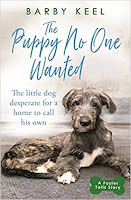Concepcion: An Immigrant Family's Fortunes, by Albert Samaha (Riverhead Books, 2021, 384 pp, $28)
Concepcion
This reviewer was excited to receive Concepcion to review due to her background in the expatriate and refugee communities, although very little experience with The Philippines per se. However, the book could easily have been two books, like several that have been reviewed here.
Most books about immigrants are about refugees, perhaps those arriving during or right after World War II, with a few stories "starring" Vietnamese refugees and with even fewer about a smattering from other countries.
Concepcion is very different: the family Concepcion from The Philippines was quite upper class in the old country with doctors and lawyers and athletes and actors, so, saying goodbye to such a lifestyle to start over in America was a long and serious group decision. The extended family's relocation took many years, with one family member after another arriving solo (eight children plus aunts and uncles and a grandfather).
Second-Guessing the Move?
From movie sets and recording contracts, from household servants in The Philippines to loading and unloading airplanes with a 50-mile one-way commute, but in America, sometimes a Concepcion family member would question the family's trans-Pacific relocation. But in America, you don't have to pay bribes at the post office or airport.
The move was disadvantageous for some of the elders but a good decision for the younger generation, and the family was all together and remained so, regarding the decision. "But what to do with the knowledge that your comfort has come at the expense of your elders." (p. 115)
Much Food for Thought
An excellent book for book club discussions, Concepcion makes the reader think about his own family and what they would have done in similar circumstances, but mostly examine whether the Concepcions did the right thing.
In addition, the average American family is nuclear with a working dad, a stay-at-home mom, a boy and a girl and a dog. If no longer reality, at least this nuclear family still exists within the minds of readers. The Concepcions, however, buy a house as an extended-family-house where they will live as an ever-changing group for a few years until they get on their feet, one by one, and move closer to work or purchase their own nuclear family's abode. The author, for example, though American-born, lives with aunts and uncles and cousins and shares a bedroom with his mother.
The Second Story: Unmemorable
This reviewer almost panned the book - we are not required to read beyond 50 pages, or to review, if we consider a book to be 'not worth it.' I did, however, continue and am glad I did. However, you can feel free to skim the first part of the book.
Even though the entire book is carefully researched and tells the story of centuries - of the history of the Pacific lands exploration by Magellan and of the 'occupation' by Spain and the US and Japan, these paragraphs, alternating with the family's narrative, is extremely dry and historical with reams and reams of names the reader cannot keep track of. Sort of reminds one of historical Russian novels. . . .
Writing Style
Written by a college-athlete turned journalist, Concepcion is a book worth reading and discussing. The author's writing style is so varied and comfortable that I am seriously considering reading his other book, Never Ran, Never Will: Boyhood and Football in a Changing American Inner City - antidote to inner city gangs? Or, another treatise on the place of football in American society, including its rare future for the average high-school boy?
















